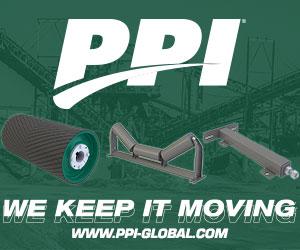Sometimes the very tools in place to protect us need a little protection themselves. That’s why it’s crucial to learn the proper care and maintenance of personal protective equipment (PPE), so that it remains ready to protect you.
More: Are You Wearing the Right PPE?
Who Uses DuPont Level A Chemical Protective Gear?
Chemical protective garments—especially Level A encapsulated suits, like the DuPont Tychem TK Series—are a critical component of PPE. They help to protect the wearer against a number of harmful chemicals. These can include immediately dangerous to life and health (IDLH) chemicals and skin-absorbed toxins.
As an example, Level A chemical protective gear is commonly used in the food processing industry, to help protect workers against the ammonia present in industrial refrigeration systems. The IDLH for ammonia is 300 ppm, and both NIOSH and ACGIH have established short term exposure limits (STEL) for this chemical of 35 ppm as a 15 minute time-weighted average (TWA). Consequently, facilities that utilize such refrigeration systems will often maintain a Hazmat team and keep Level A suits on hand in order to deal with an accidental release of ammonia into the workplace or environment.
More: Don’t Violate Emergency Shower & Eyewash Standards
How Should DuPont Level A Chemical Protective Gear Be Kept Ready After Purchase?
It is critical that Level A garments are properly stored when not in use. While the garment may have a broad ambient temperature range for use, storage temperatures with extreme variation can degrade Level A garments. Therefore, it’s best to store Level A garments indoors in a temperature-controlled environment, free of sunlight, dirt and insects. Suits can be hung, kept in their storage bag, or in their original boxes. They also should be kept free from compression by heavy objects.
More: Your “1-Stop Shop” for Safety
How Should DuPont Level A Chemical Protective Gear Be Tested for Readiness?
Users of Level A garments should adhere to a regular maintenance schedule to keep them ready for use when needed. This involves inspection and testing as specified by the manufacturer. As an example, DuPont recommends the following for its Tychem Level A suits:
- Garments should be inspected and tested upon initial receipt of the product.
- Garments should be visually inspected prior to donning and use.
- Garments should be inspected and tested after wearing (when no contamination has occurred).
- Garments should be inspected and tested annually.
Level A garment testing is handled via an inflation test, performed to the ASTM F 1052 “Standard Testing Method for Pressure Testing Vapor Protective Ensembles.” This method is available from ASTM. This test is used to verify that the garment is gas-tight.
When Should the DuPont Level A Chemical Protective Gear Be Retired?
In general, the user should refer to the manufacturer for guidance on suit retirement recommendations. DuPont recommends that a Level A suit be taken out of service and marked “for training only ” 5 years from receipt of the product by the user. A suit should be retired from service earlier if it has been damaged by use or storage or contaminated by hazardous materials. Any garment that does not pass ASTM F 1052 should also be taken out of service until it can be repaired.
What Additional Resources Are Available?
Some manufacturers offer helpful supplemental instructions to help guide users in the use and upkeep of their garments. DuPont offers SafeSPEC 2.0 as a comprehensive web-based resource for chemical apparel. Specific to Level A garments, SafeSPEC offers written and video content that educates users on subjects such as garment donning and doffing, inspection and testing, along with a database of permeation testing against its range of Tychem chemical protective fabrics. Users can walk through a complete suit selection guide to select any type of chemical apparel based on the hazards. There is even a feature that allows these selections to be saved for future reference.
With proper care and maintenance, your Level A chemical protective gear will remain ready to help protect workers when needed.
Looking for chemical protective clothing?
Contact Gary Porter, the Safety/Warehouse Equipment Group Director at IBT Industrial Solutions, at (913) 261-2143 or gporter@ibtinc.com.





